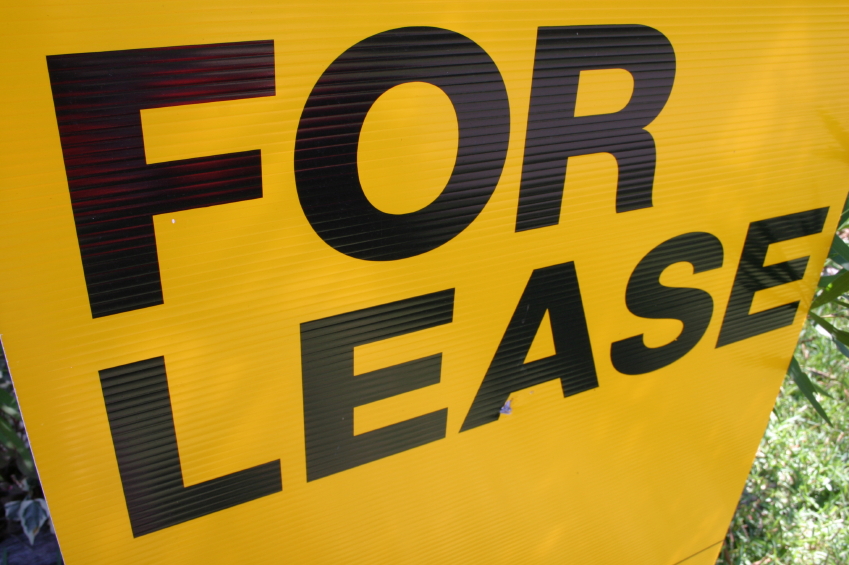Commercial Real Estate Faces Its Own Foreclosure Crisis
Offices, stores and industrial buildings are all facing a perfect storm of increasing vacancies and a lack of capital with which to refinance their debt.
Jul 31, 202060.7K Shares832.5K Views
As the residential real estate market continues its downward trajectory, the ripple effects of the crisis threaten the $8 trillion commercial real estate market. Offices, stores and industrial buildings are all facing a perfect storm of increasing vacancies and a lack of capital with which to refinance their debt.
“Really since the start of the year the trouble is coming out of the woodwork as far as notices of default, foreclosures, bankruptcies,” said Bob White, founder and president of Real Capital Analytics, a real estate market research firm. “It’s growing alarmingly fast.” Currently, some $50 billion worth of commercial mortgages are in default or foreclosure. White and others in the industry say the worst is yet to come.
Illustration by: Matt Mahurin
“The two key things creating problems are the tenants are having financial difficulties, especially retail tenants, and there’s a dearth of capital out there for even healthy properties to refinance debt,” said Steven Ott, director of the Center for Real Estate at the University of North Carolina, Charlotte.
Like the residential real estate market, commercial real estate loans were bundled into securities. “The commercial mortgage backed securities market and further derivatives built on that have a very similar structure to the asset backed market the residential mortgages were pooled into,” said David Geltner, director of research at the Center for Real Estate at the Massachusetts Institute of Technology. “You have subordination levels governed by credit rating agencies. Obviously in retrospect, those subordination levels were way too low.”
It’s helpful to think of securitization as an accelerant: It lets returns zoom up during a boom, but it magnifies and spreads the pain of losses in a crash. Now, even stable businesses face guilt by association when they try to refinance: skittish over rising default rates, lenders are tightening up the purse strings for everyone. “Even well-capitalized insurance companies or commercial banks don’t want to catch the proverbial falling knife,” said Victor Calanog, director of research for commercial real estate analysis firm Reis. “Values may still fall.”
Unlike the residential sector, however, experts say that lending practices — at least until the height of the boom — remained conservative in the commercial market. A bruising slump caused by overbuilding that created a glut of unfilled supply in the early 90s was still fresh in the minds of many developers and commercial lenders. By contrast, until last year, the United States had never experienced an across-the-board drop in home prices, making it almost believable that values would never weather a sustained, nationwide decrease.
By 2006 and 2007, though, the commercial market succumbed to bubble thinking. Prices increased and lenders began relying only on recent performance when rating the credit-worthiness of commercial mortgages. “The underwriters for these securitized loans were basically very optimistic about the ability of commercial properties to increase their income,” says Reis’s Calanog. In other words, the maxim of ‘what goes up must come down’ went out the window. Analysts are quick to point out that if commercial real estate lenders hadn’t been as disciplined as they were, the problems the market faces would be even worse than they are now.
The problem runs deeper than bubble economics, though. Thomas Bisacquino, president of the National Association of Industrial and Office Properties, says that most of the industry’s coming crisis isn’t due to irresponsible lending, but rather to the way commercial loans are structured. Unlike home mortgages, which are usually for a few hundred thousand dollars and repaid over a 30-year term, banks lend businesses up to tens of millions in shorter-term increments, usually five to seven years. Unfortunately for millions of commercial-property mortgage holders, their terms ending just as the credit market grinds to a near-complete halt. This lockdown of the credit markets means that loans can’t be refinanced, pushing even healthy businesses onto the foreclosure tracks.
MIT’s Geltner estimated that bubble pricing was responsible for an approximately 15 percent run-up in prices, which would have impacted only the most aggressive borrowers when they fell. Instead, he estimates that the commercial sector overall has dropped by 15 to 20 percent already, and will probably drop by that much again before turning around.
Other industry experts agree. The problem is going to get worse before it gets better. “We’re projecting 17.6 percent vacancy for the office sector through the end of 2010, which is the highest level since 1992,” said Calanog. “The last time we saw this was during the savings and loan crisis.” Rising unemployment numbers illustrate another facet of the problem; when companies cut people, their need for space decreases, as well.
Offices aren’t even the hardest-hit of the sector. Retail space is suffering greatly as businesses ranging from mom-and-pop operations to major department store chains fold. “The sector we are most pessimistic about is the retail sector,” said Calanog. “In 2008 we were quite alarmed when we saw a significant decrease in performance, a decline in occupied stock we’d never seen in this sector before.” Since consumer spending has contracted for the first time in decades, retail owners face a grim outlook in the near term.
Just as commercial real estate’s fall has lagged behind the fate of the residential market, a turnaround won’t take place until well after the home foreclosure crisis has been contained. Right now, most of the government’s energies are focused on keeping people in their homes, which means fewer dollars and resources are being funneled into the commercial sector. While the commercial market will receive some of the money the government has set aside to buy various types of loans via the Term Asset-Backed Securities Loan Facility (aka TALF) program, the bulk of TALF funds are going towards freeing up the consumer lending categories of home loans, car loans and credit-card debt. There’s also no equivalent of government-backed mortgage agencies Fannie Mae and Freddie Mac to which most commercial property owners have access.
“We need the government to step in and provide guarantees for the commercial mortgage-backed securities market,” said NAIOP’s Bisacquino. “There is a lot of private equity sitting on the sidelines. TALF can provide the guarantees to get that to return.”
Industry advocacy group the Real Estate Roundtable has a five-point proposal for turning around the commercial real estate market. It lobbies not only for TALF funding but for greater leeway for loan servicers, allowing them to modify loan terms. The plan also calls for changes to accounting and tax rules and encourages foreign investment in the commercial mortgage-backed securities market.
In the future, many want to the government to introduce legislation that requires accountability. “I think part of the long-term solution to this is people have to have skin in the game,” said MIT’s Geltner. “If you get a bonus it has to be based on long run performance.”
Martha C. White is a freelance journalist in New York. She frequently writes on economics.

Rhyley Carney
Reviewer
Latest Articles
Popular Articles

